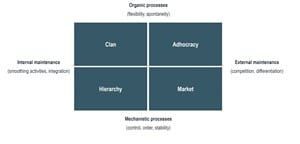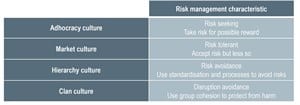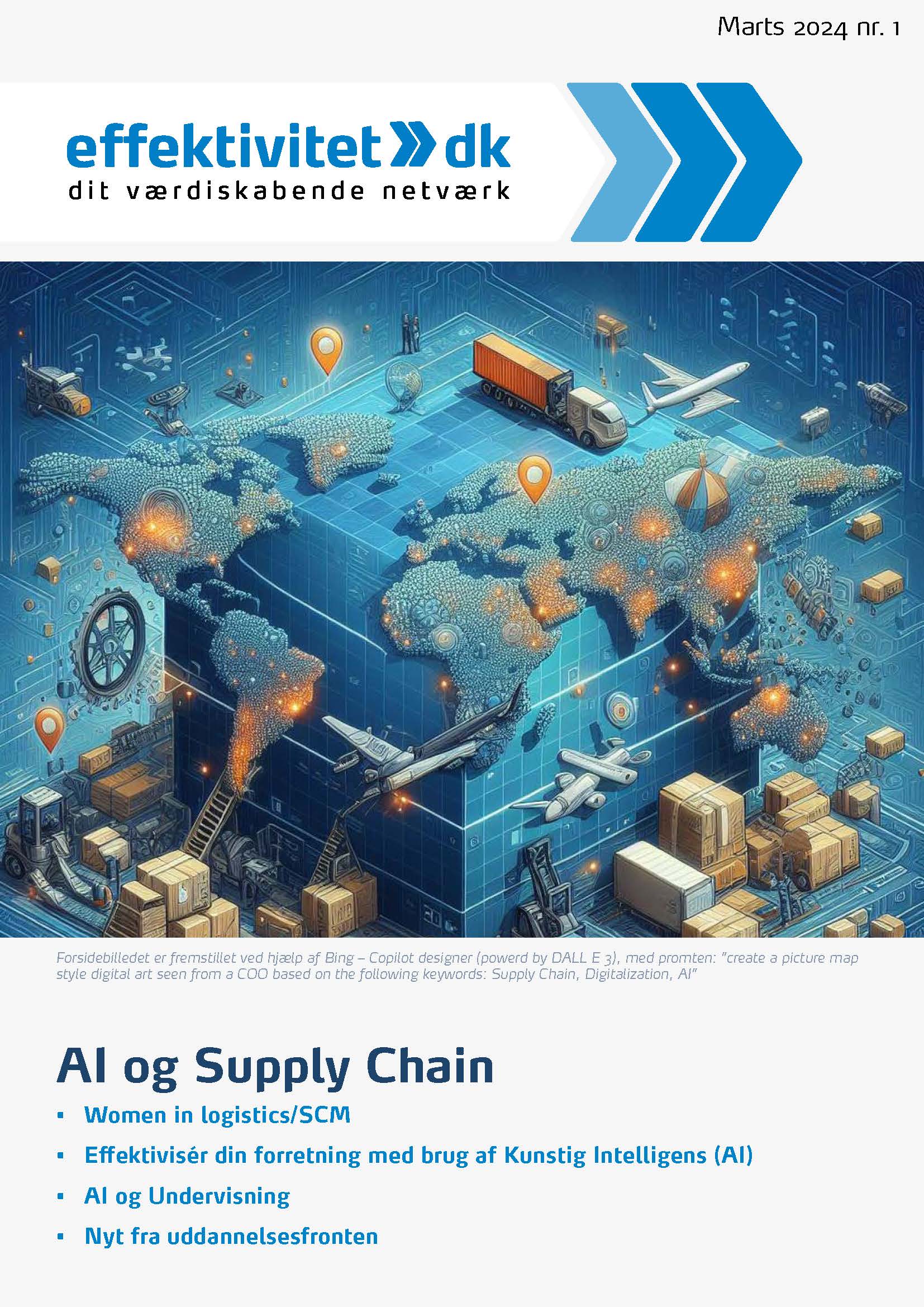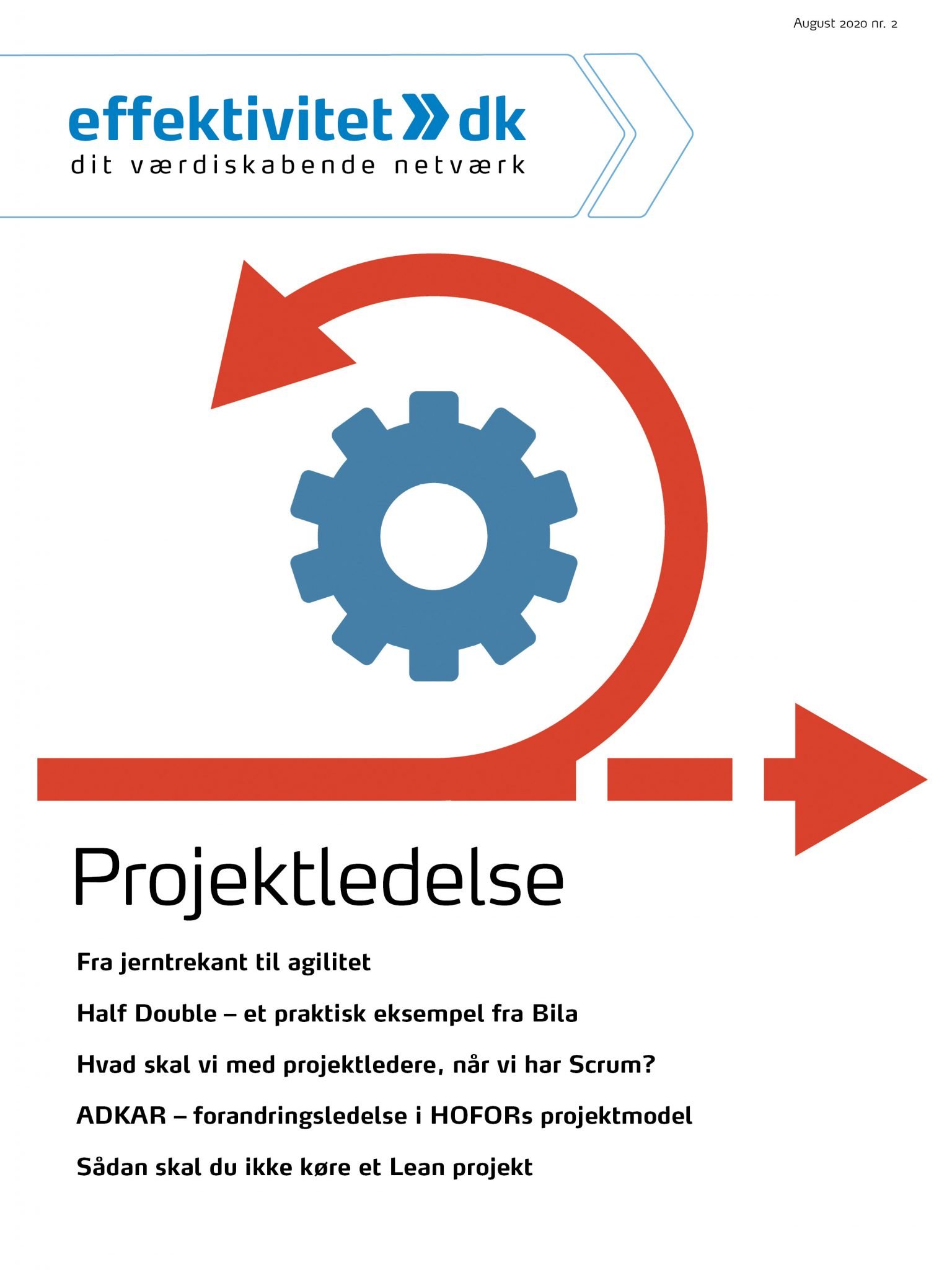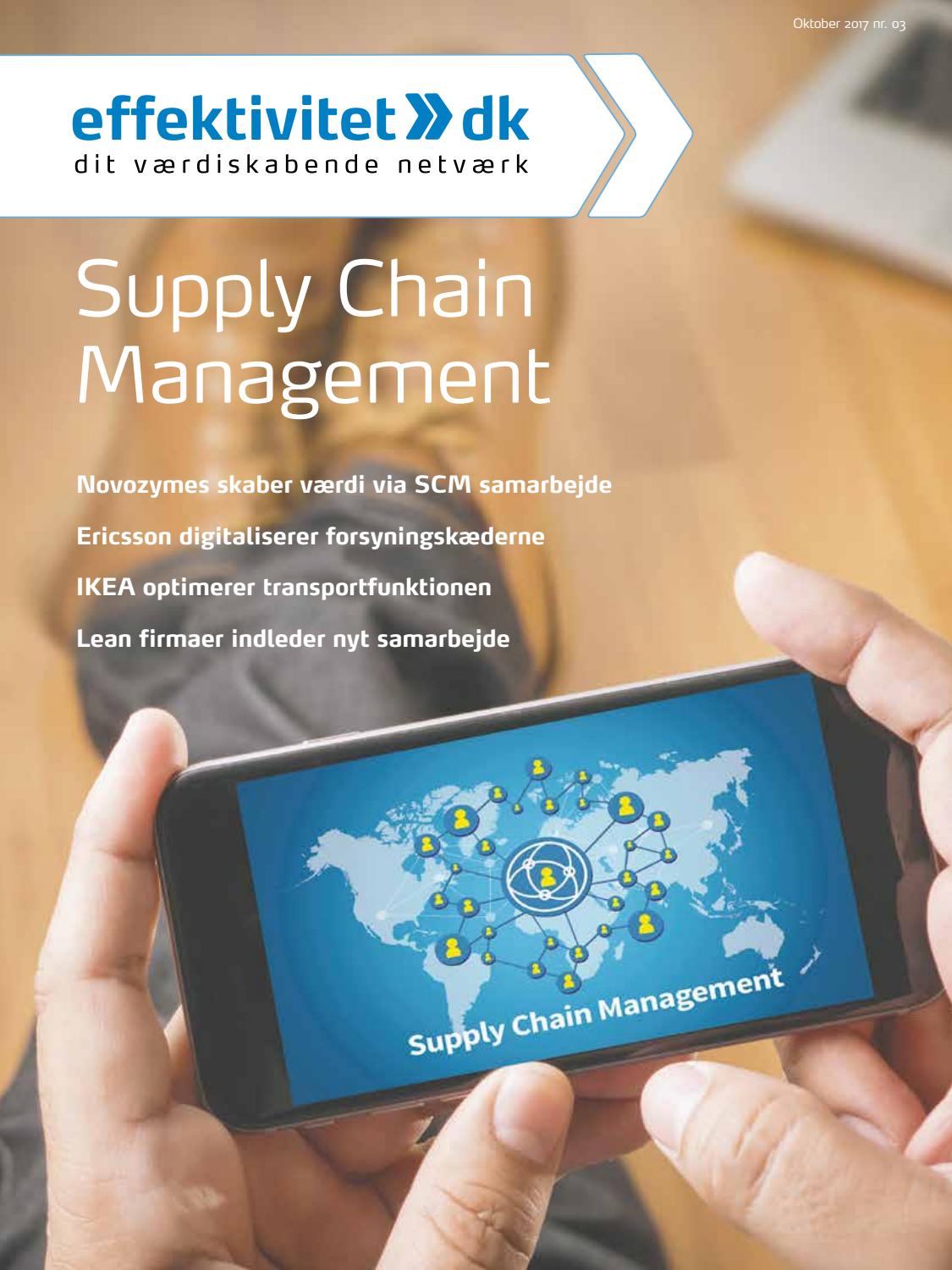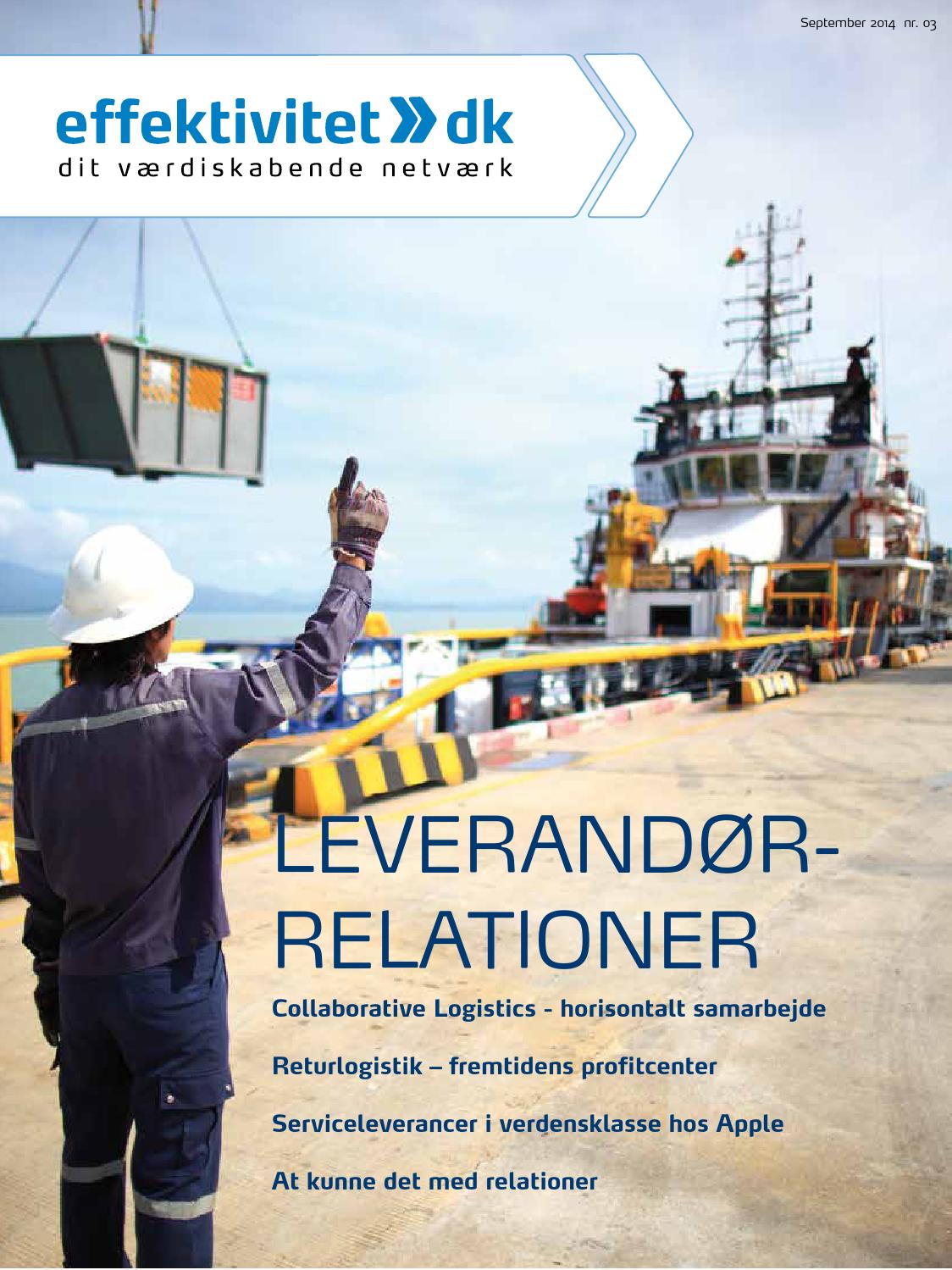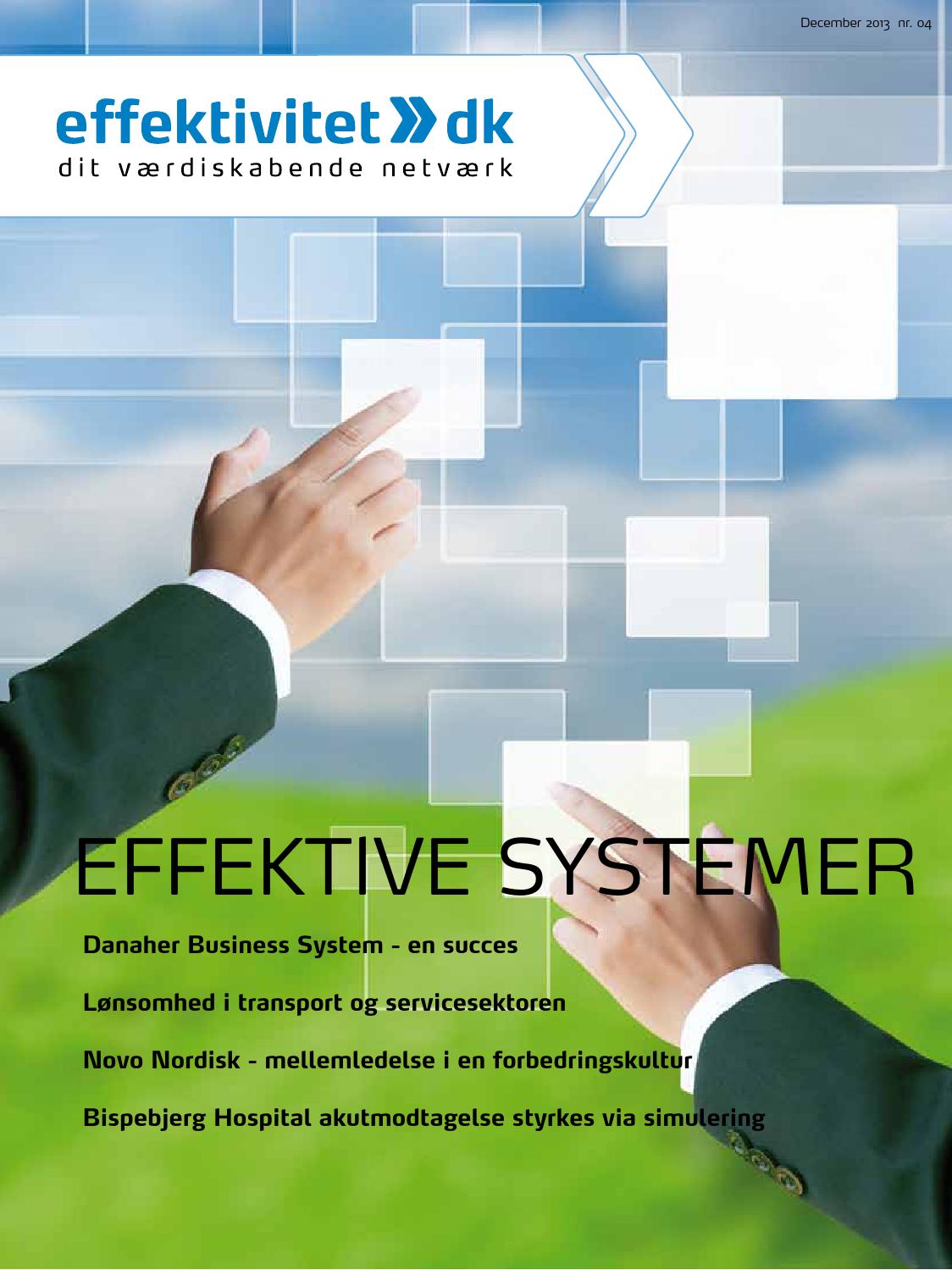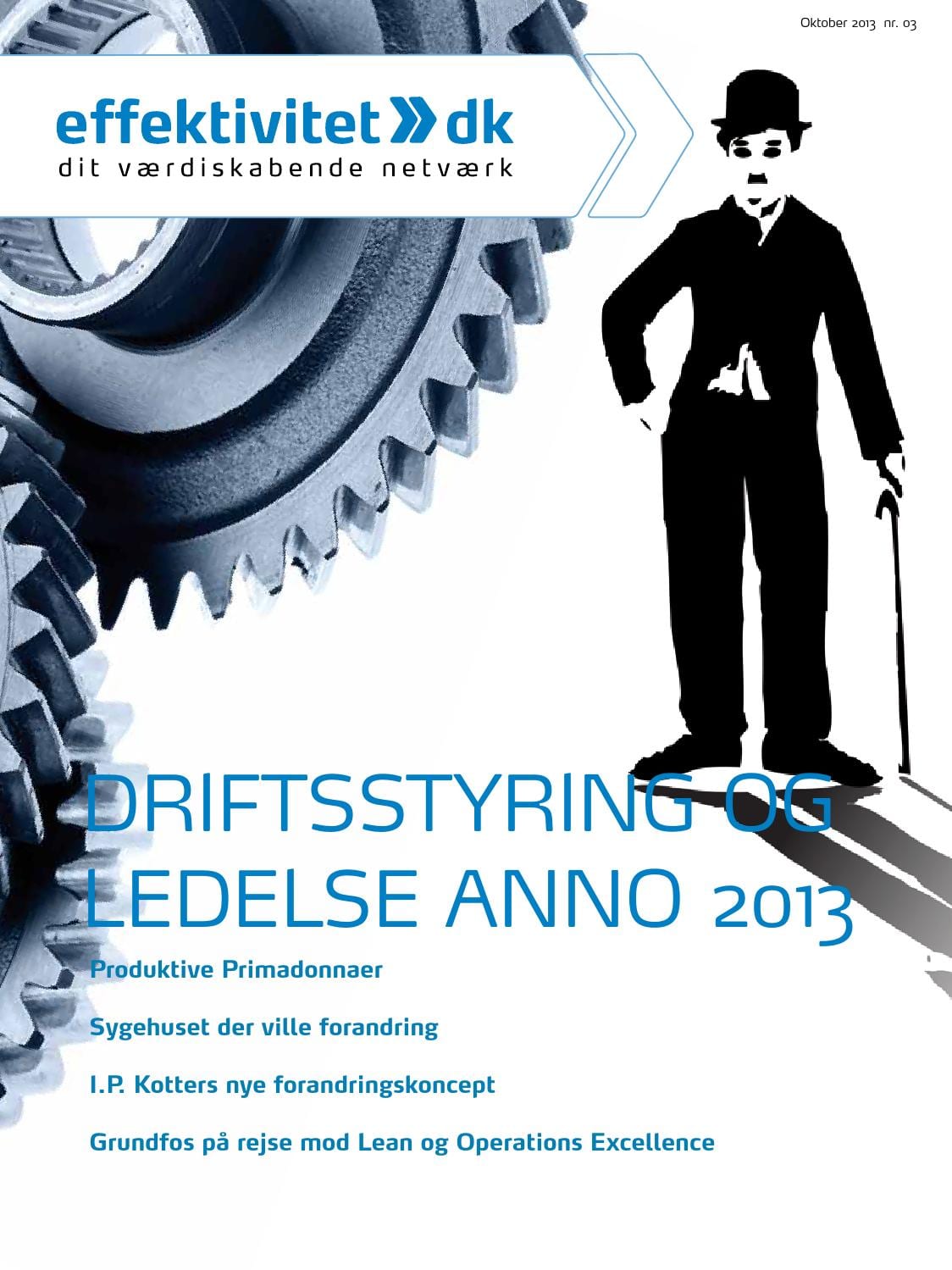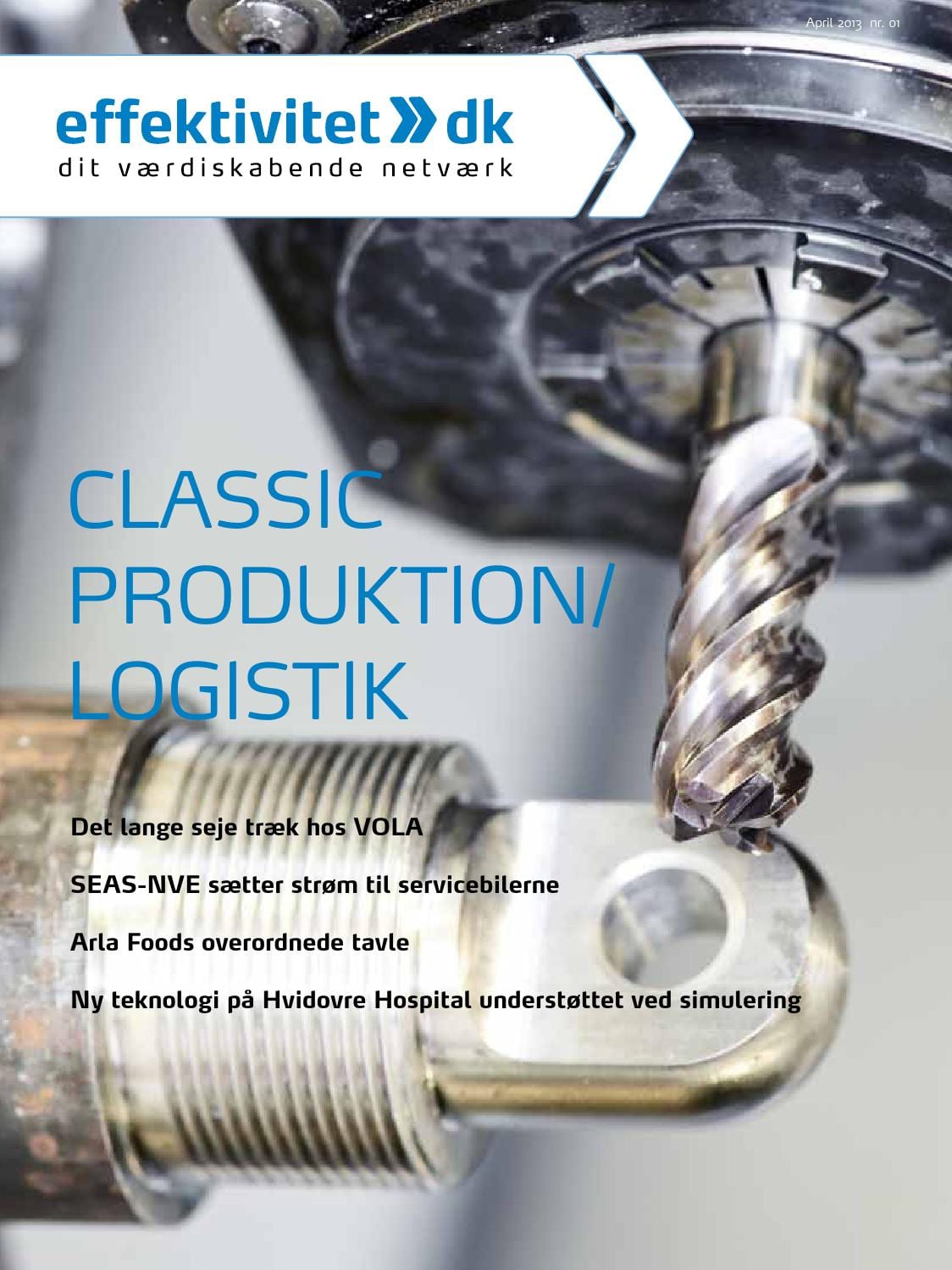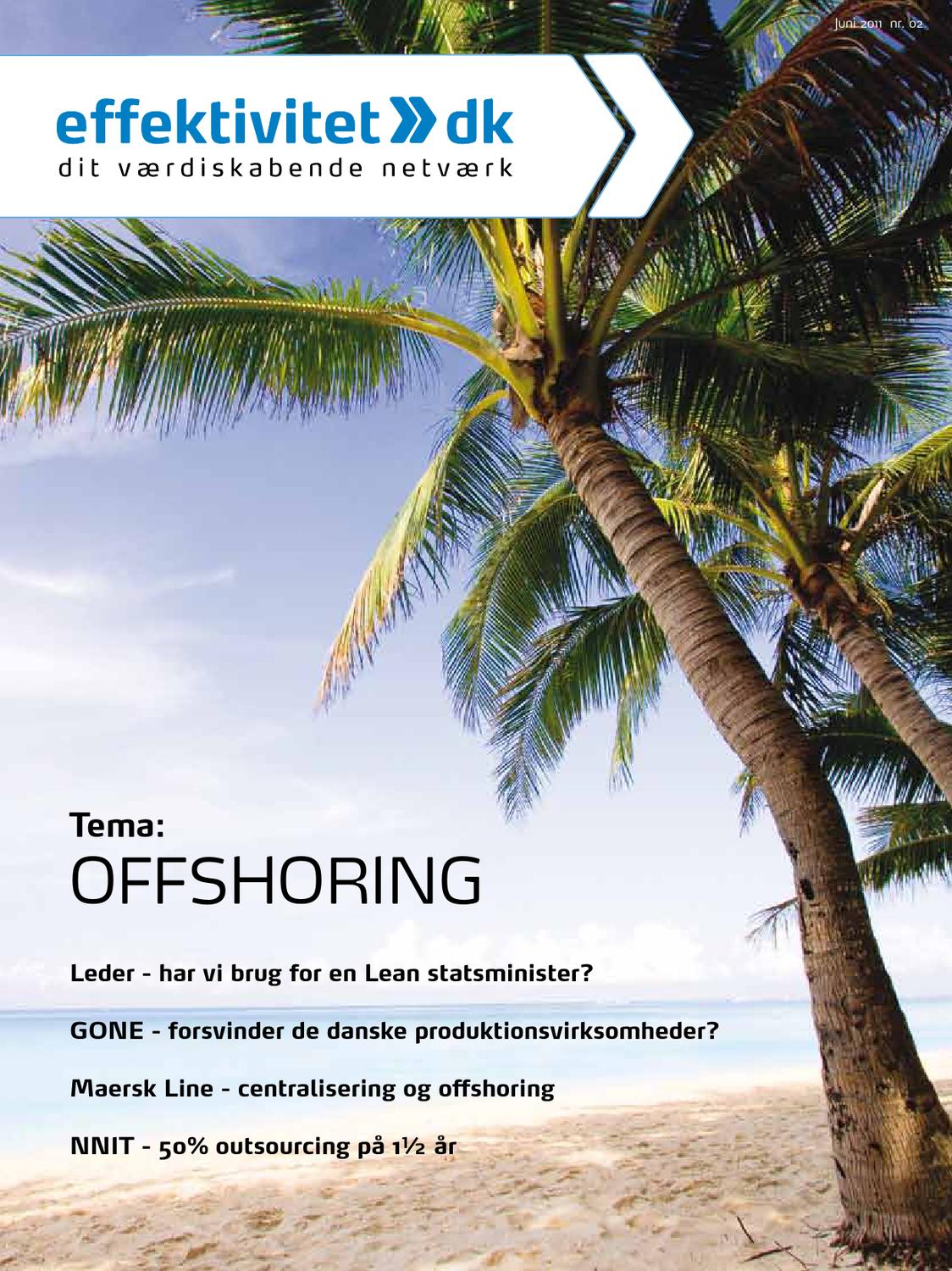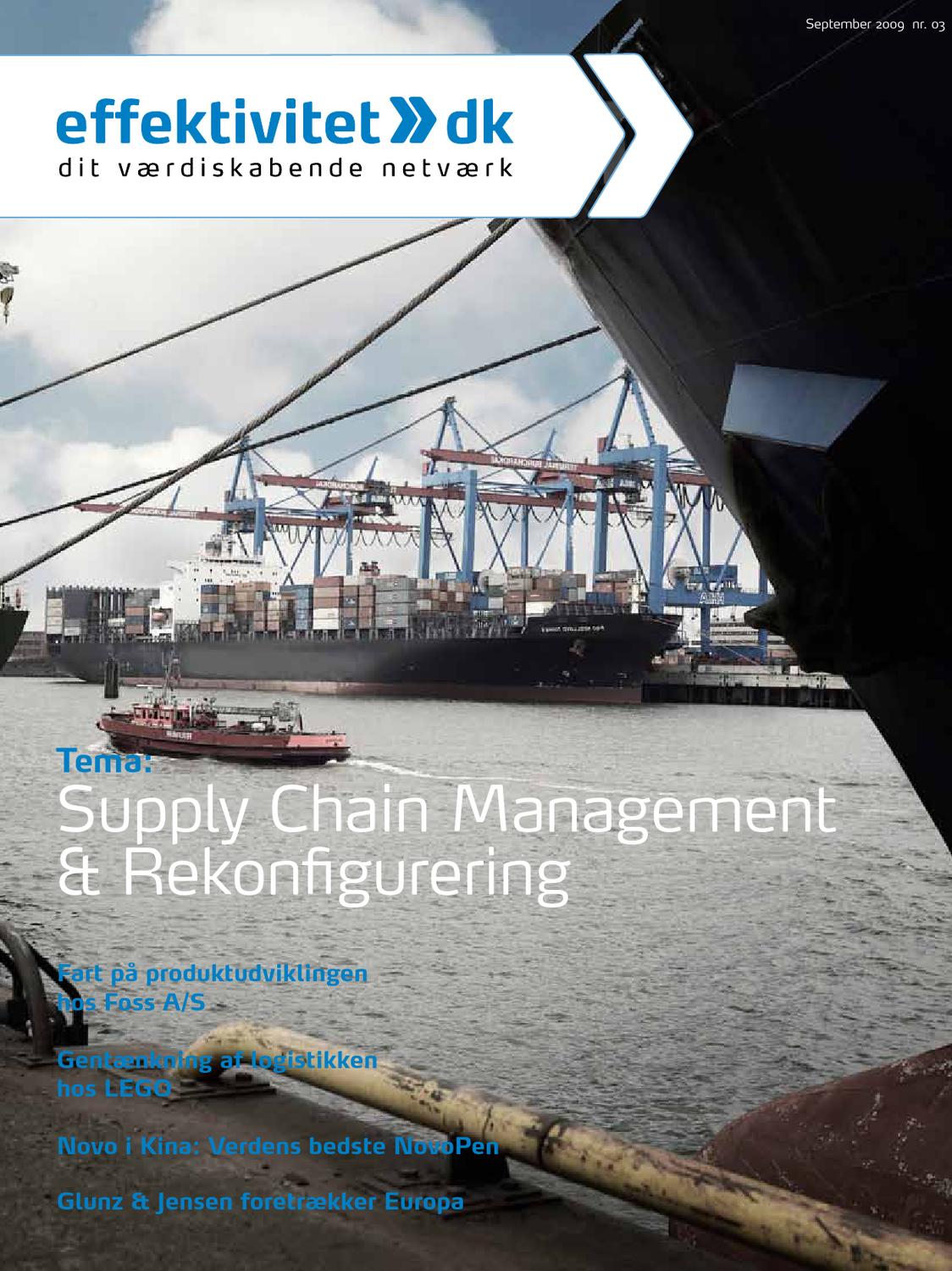Four years later, in 2011 the world witnessed severe earthquakes and a tsunami in Japan and New Zealand, directly affecting 121 organisations of a sample of 550, headquartered in 18 countries, operating in 12 different industry sectors.
During the same year, parts of Sony’s UK supply chain were disrupted significantly when one of the companies’ major distribution centres was looted as part of riots throughout the UK. During that period, UK retailers claim to have lost a minimum of 7,500 hours of trading time, whilst 11,000 members of staff were affected by violent acts, leading to extensive impacts for supply chain networks, backing these retailers.
In 2013, the developed world was shocked when the cold reality of supply chain complexity surfaced resulting in 1130 garment workers losing their lives in the Rana Plaza disaster, affecting supply chains and retailers globally.
Following an extensive survey by the Business Continuity Institute in 2013, 75% of a sample of 500 companies experienced at least one supply chain disruption in 2012, with 42% of failures emanating from partners beyond tier one.
The underlying reality is that disruptions to business operations are on the increase. Even though not all incidents are directly relevant to all organisations, their connectedness through their supply chain network raises the relevance and potential of disruptions through partners. More specifically, not only the steady rise in the number of incidents is capturing the attention of supply chain managers, but also their emergent relevance, based on the amplified connectedness of the network interdependencies.
The importance
Given the changing nature of the global operating environment, supply chain risks are becoming increasingly relevant and topical for organisations. Thus, in the pursuit of customer satisfaction and commercial competitiveness, organisations are drawn to increasingly invest in managing risks and potential disruptions within their supply chain networks.
The immediate aim of such investments is targeted at the development of strategies and techniques to enable the identification, impact forecasting, mitigation and preparation for supply chain risks.
Applied correctly, these implicate great opportunities in synchronising and improving processes, mitigating against disruptions, and mapping potential risks, for example. However, often a key component of the success of the application of these initiatives is continuity and the consistency at which these procedural solutions are applied. For most organisations, this is where the challenge really lies.
Figure 1

Figure 2
The opportunity
This article is based on a detailed research study which has been carried out together with four leading organisations in their respective markets. The research specifically investigated the relationship between an organisations culture and the attitude, approach to and effectiveness of managing risks along supply chains.
The research clearly showed that even though many of the risk management solutions can be bought in, the continuous application and improvement of these can only be delivered by the organisations’ own population.
Thus, the challenge for organisations revolves around naturally guiding staff behaviour when faced with risks and in generating a lasting motivation, risk understanding and training that is conducive to the risk environment and the strategic goals of an organisation.
In fact, the supply chain world is littered with examples of organisations, which strive to perfect risk management by installing new systems, processes and by bringing in consultants to mitigate against disruptions, despite the fact that the organisation’s own staff often lack the intuitiveness, knowledge and autonomy to deal with these as they arise.
In fact, evidence from all cases strongly suggests that as an organisation’s culture provides a basis for organisational behaviour, it also shapes the approach to managing risks along the supply chain.
More specifically, employing an existing cultural framework, companies can be categorised by way of their predominant culture and evaluated based on their risk management actions.
Based on an in-depth analysis of each of the participating organisations, it transpires that different risk orientations are largely determined by an organisation’s culture.
In fact, the research clearly shows that a hierarchy culture is highly geared towards risk avoidance, whereas an adhocracy culture is focussed largely on risk taking, the generation of sales and so forth. As per the organisational cultural risk continuum, clan and market cultures represent positions in between these two cultures, with a clan culture typically being more risk averse than a market culture.
Nevertheless, the research also clearly exhibits that rather than being “pure”, an organisation’s culture is representative of a complex amalgamation of cultural traits. Moreover, even though an organisation’s culture will be typified by its most dominant trait(s), the position of a company is determined by the interplay of the different cultural influences within an organisation.
This also means that an organisation’s approach to managing risk in the supply chain is determined by the different levels of dominance of cultural traits. For example, an organisational culture which is predominantly hierarchical yet has a strong focus on the market (market culture) is likely to take more risks than a hierarchy culture with strong traits of a clan culture.
Based on the findings from the study, it is also possible to deduce that certain cultures are more suitable to some operating environments than others. In fact, the study highlights that predominant hierarchy and clan cultures are suited more favourably to stable market environments, a hierarchical culture is most suited towards dealing with volatility, for example. This is as each organisational culture inherently influences the approach employees take to deal with risks and disruption in the supply chain.
Building on this, it is advocated that the strategic use and management of organisational cultures can favourably and naturally support the management of risks along the supply chain.
Based on the findings from the research, it is put forward that organisations can strategically harness and manage their cultural traits, forming a basis for the decision making as well as the general conduct and thus have a significant impact on the effectiveness of the management of risk along supply chains.
As such, the culture of an organisation heavily influences the choice of partners along the supply chain, the supply chain design, the type and nature of contracts, impacting the level and types of risks organisations and supply chains take collectively.
In order to harness the benefits of different cultural traits, however, it is imperative to innately understand the potential impact of changes to the organisational culture in the context of the operating environment, as well as the impact such change may have on the organisation itself.
Based on this, a holistic, strategic framework has been developed along with a set of guidelines for practitioners to use when aiming to substantively and sustainably optimise the management of risks along the supply chain.
Elaborating on figure 4, the guidelines for optimising the management of risks along the supply chain by way of harnessing an organisation’s culture revolve around:
- Maximising the understanding of the strategic organisational goals.
- Developing an in-depth understanding of the organisation’s culture
- Examining the supply chain environment and the impact this has on the business.
- Importing, increasing or harnessing key cultural traits to naturally focus staff on strategic goals.
- Aligning organisational cultural traits with strategic goals as well as the supply chain environment.
- Constantly re-evaluating the interplay between all components to avoid a misalignment between these.
Figure 3
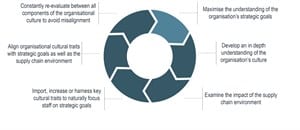
Figure 4
Conclusion
Employing the developed framework along with the set of guidelines provided and insights from the research, organisations can naturally and sustainably optimise their risk management approach. Therewith, the utilisation of an organisation’s culture provides a novel and differentiated perspective for practitioners to effectively manage risks along the supply chain, promising to complement existing methods, as well as amplifying the success and longevity of these significantly.


